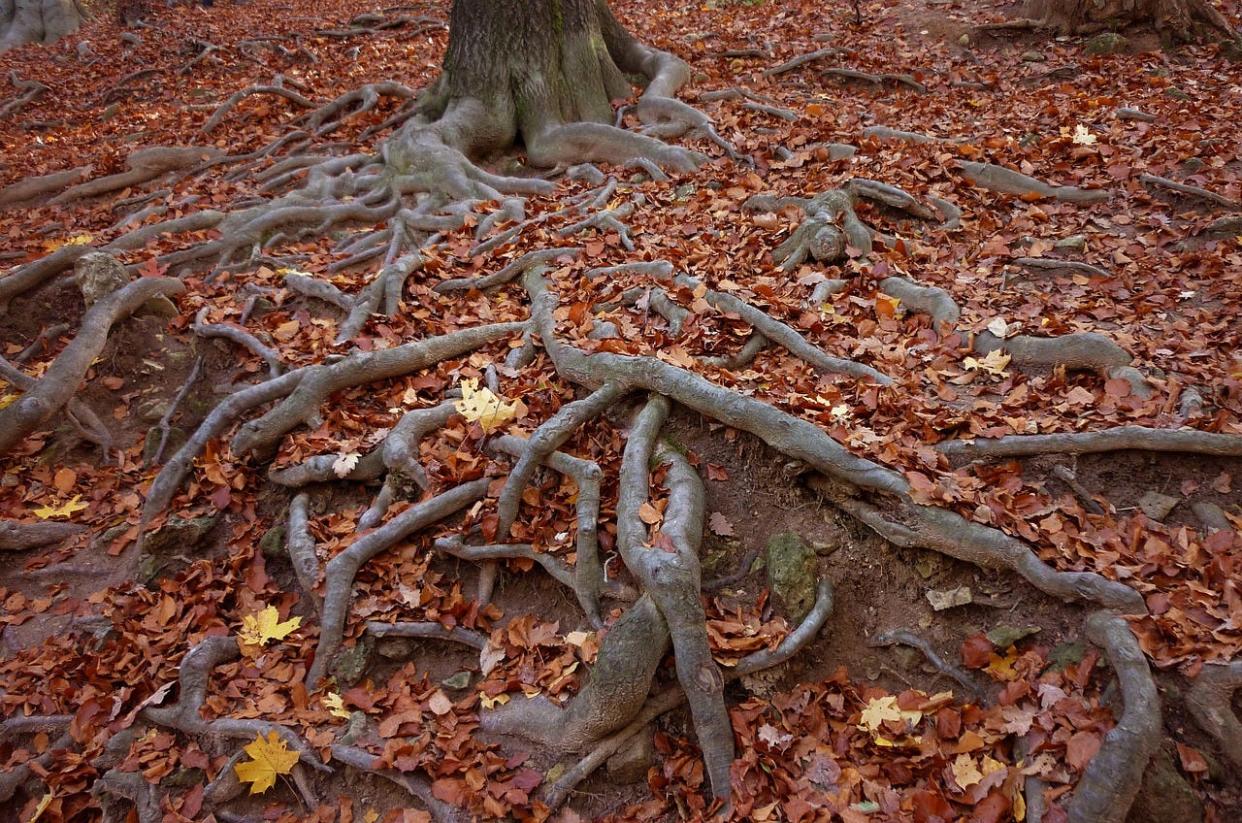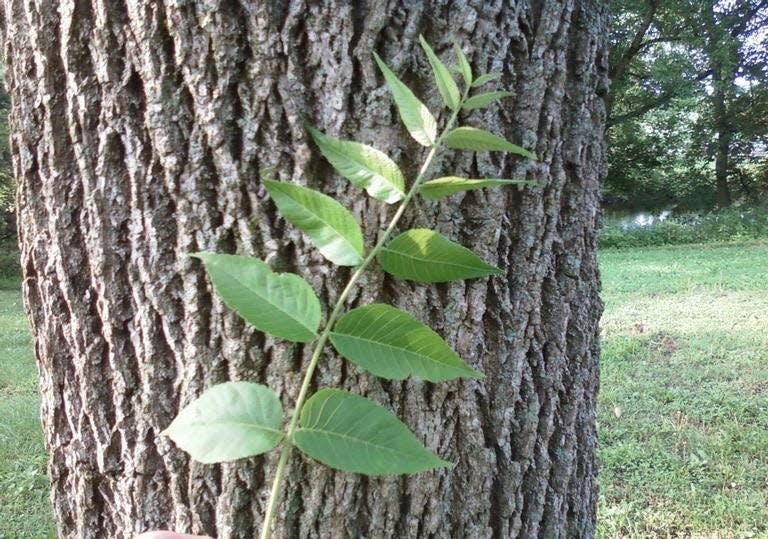Over the Garden Gate: Consider the roots of plants
When gardeners shop for plants, we naturally look for visually pleasing, healthy foliage and flower color. We check the tag for the plant’s light and moisture requirements and mature size. We also need to think about what is going to be happening below ground once the plant takes hold.
Roots absorb moisture and nutrients, anchor the plant, and grow in both horizontal and vertical directions. The root system’s depth and spread should influence your decision on where to plant them, along with other factors such as the plant’s nutrient needs. A healthy root environment consists of adequate growing space for the root system, soil that provides nutrients, and soil structure that lets the roots grow. Besides the natural growth habits of plants, sufficient water and oxygen in the soil can govern rooting depth.

Large, healthy trees have extensive root systems and most primarily grow shallowly and laterally, sometimes for considerable distances. Tree roots can damage building foundations, sidewalks and underground pipes. Any tree can develop surface roots in poor soil, but there are a few species that naturally tend to do this, particularly in the Acer genus of trees (maples). They can create a tripping hazard or if planted too close to a sidewalk, they can lift and crack the concrete. There are a few species of trees, such as hickories and walnuts, that have a very deep vertical tap root. For these trees, the condition of the soil is very important. Heavily compacted soil will slow or completely hinder their growth.
Small trees and shrubs with shallow, slow-growing roots are the best choices for foundation plantings. That is why you often see boxwoods, azaleas, and yews growing near a house. Some perennials have taproots so deep that transplanting them successfully proves difficult. It is best to find a permanent location for these plants so that moving them is never considered. Damage to a long vertical taproot can stunt or kill the plant. Annual plants can have either shallow or deep growing roots – consider whether you should plant them in a window box or a larger pot.
Will the plant spread? Plants can spread from creeping rhizomes underground. A rhizome is not a true root, but is an underground stem that produces new shoots. You may want this feature so the plant spreads and fill in an area of your yard or garden. Keep in mind, though, that some plants spread very aggressively and may be hard to control. Containers are often the best location for these types of plants, as attempting to dig them out can prove futile. Sometimes, the smallest bit of rhizome left behind is enough for these aggressive plants to grow and start spreading again. It is just one more thing happening below ground that could impact your plant choices.
When planning a mixed bed landscape, you may find that some perennials and shrubs or trees should not be planted together. Fast-growing shrubs like forsythia and some hydrangeas can have aggressive root systems that will steal water and nutrients from nearby plants. Roses are sensitive to being near plants like this. Two plants that are heavy feeders and competing for the same nutrients could inhibit one another’s development if planted too close together. Vegetables are another category of plants that should be examined closely for root space and nutrient needs when planning your garden.
Some plants have roots that can release toxins that suppress the growth of other plants in their vicinity. This concept is called allelopathy. Plants that are sensitive to or intolerant of these toxins should not be placed in the ground in close proximity to those roots. One of the most widely known tree that has this capability is the black walnut. Plants in the nightshade family (tomatoes, peppers, eggplant, potatoes, etc.) are especially intolerant of the chemical that black walnut roots emit, called juglone. Sunflowers and invasive garlic mustard are other examples of plants that have fairly strong allelopathic properties. To learn more about allelopathy, visit extension.psu.edu/allelopathy-in-the-home-garden.

It is worthwhile to take a little extra time to gain knowledge of your plant’s root growth and nutrient needs when making plant selections. Understanding the root system is an important first step to establishing healthy, vigorous plants! As always, if you have questions about making smart plant decisions or want more information on your plant’s root habits, contact our Garden Hotline at beavermg@psu.edu or 724-371-2062.
Connie Peloza is a Penn State Master Gardener Trainee in Beaver County.
This article originally appeared on Beaver County Times: Consider the roots of plants
